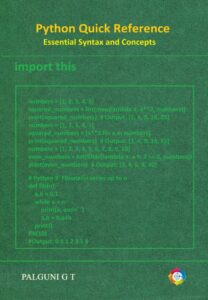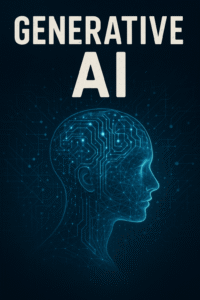The rapid pace of technological advancement has equipped humanity with powerful tools to address some of the most pressing real-time problems. From environmental challenges and healthcare crises to infrastructure and communication issues, emerging technologies are providing innovative and scalable solutions. This article explores key real-world problems and how modern technology is being leveraged to solve them effectively.
1. Climate Change and Renewable Energy
Problem:
Global warming, rising sea levels, and extreme weather patterns are threatening ecosystems and human settlements. The excessive use of fossil fuels and deforestation are accelerating climate change, creating a critical need for sustainable energy solutions.
Solution:
✅ Renewable Energy:
- Solar panels and wind turbines are being deployed on a large scale to reduce dependency on fossil fuels.
- Perovskite solar cells are increasing energy efficiency and lowering production costs.
- Fusion energy (through projects like ITER) is being explored as a long-term clean energy solution.
- Smart grids powered by AI are optimizing energy distribution and reducing wastage.
2. Healthcare Crisis and AI-Driven Medicine
Problem:
Pandemics, chronic diseases, and unequal access to healthcare continue to challenge global health systems. Medical research and drug development are often time-consuming and costly.
Solution:
✅ AI in Healthcare:
- AI-based diagnostic systems (e.g., IBM Watson) analyze medical data to provide faster and more accurate diagnoses.
- Predictive models help anticipate disease outbreaks and allocate medical resources efficiently.
- AI-assisted drug discovery accelerates the development of new medications by analyzing molecular structures and testing combinations.
- Telemedicine platforms enable remote patient monitoring and consultations.
3. Traffic Congestion and Smart Transportation
Problem:
Urbanization and population growth have led to increased traffic congestion, pollution, and accidents. Traditional traffic management systems are often inefficient and reactive.
Solution:
✅ AI and IoT in Transportation:
- AI-driven traffic lights adjust in real-time based on traffic flow.
- Autonomous vehicles reduce human error and optimize routes.
- Smart public transportation systems track usage patterns and adjust schedules dynamically.
- Hyperloop and eVTOL (electric vertical takeoff and landing) vehicles are reducing travel time.
4. Cybersecurity Threats and Quantum Cryptography
Problem:
The rise in cyberattacks, data breaches, and ransomware is compromising personal and corporate security. Traditional encryption methods are becoming vulnerable to advanced computing attacks.
Solution:
✅ Quantum Cryptography and AI-Based Threat Detection:
- Post-quantum cryptography is being developed to withstand attacks from quantum computers.
- AI-based threat detection systems monitor networks in real-time and prevent intrusions.
- Biometric security systems (e.g., facial recognition and retina scans) improve identity verification.
- Zero-trust architecture ensures strict access control and network monitoring.
5. Food Shortage and Precision Agriculture
Problem:
Growing global populations and climate change are straining food production. Traditional agricultural methods are becoming unsustainable.
Solution:
✅ AI and IoT in Agriculture:
- Precision farming uses drones and AI to monitor soil health, moisture levels, and crop growth.
- Automated irrigation systems adjust water usage based on weather and soil data.
- Vertical farming reduces land usage and increases yield through controlled environments.
- Genetically modified crops are designed to withstand drought and pests.
6. Waste Management and Recycling
Problem:
Urbanization and consumerism have led to an overwhelming increase in waste production. Improper waste disposal is causing pollution and environmental degradation.
Solution:
✅ AI-Based Waste Sorting and Recycling:
- Automated waste sorting systems use AI and computer vision to separate recyclable materials.
- Waste-to-energy plants convert waste into usable electricity and heat.
- Plastic-eating enzymes are being developed to break down plastics.
- Blockchain-based waste tracking systems ensure proper disposal and recycling.
7. Water Scarcity and Desalination Technologies
Problem:
Access to clean water is becoming scarce due to population growth, pollution, and climate change. Traditional water treatment methods are insufficient for large-scale needs.
Solution:
✅ Advanced Desalination and Water Recycling:
- Reverse osmosis desalination converts seawater into potable water.
- Nanotechnology-based filters improve filtration efficiency and reduce waste.
- AI-based leak detection systems prevent water loss in pipelines.
- Smart irrigation systems reduce water wastage in agriculture.
8. Education Gaps and Personalized Learning
Problem:
Traditional education systems often fail to meet the needs of diverse learners, leading to knowledge gaps and unequal access to quality education.
Solution:
✅ AI-Based Learning Platforms:
- Adaptive learning systems adjust content based on student progress.
- Virtual and augmented reality classrooms provide immersive learning experiences.
- AI tutors provide real-time feedback and support.
- Language translation AI ensures global access to educational content.
Here is a comprehensive list of 100 real-time problems grouped into various categories such as environmental, social, technological, health, and more.
🌍 Environmental Issues
- Global warming and rising sea levels
- Plastic pollution in oceans and rivers
- Deforestation and loss of biodiversity
- Air pollution in urban areas
- Soil erosion and land degradation
- Water scarcity in developing countries
- Melting polar ice caps
- Acid rain and its impact on agriculture
- Ocean acidification and marine life extinction
- Forest fires and their environmental impact
🌱 Sustainability and Renewable Energy
- High carbon emissions from fossil fuels
- Low efficiency of solar panels in cloudy areas
- Dependence on non-renewable energy sources
- Energy wastage in homes and industries
- Lack of infrastructure for electric vehicles
- Limited battery life for renewable energy storage
- High cost of nuclear fusion technology
- Waste management in urban areas
- Overuse of single-use plastics
- Improper disposal of electronic waste (e-waste)
🏙️ Urban and Infrastructure Challenges
- Traffic congestion in cities
- Poor public transportation systems
- Unsafe pedestrian and cycling infrastructure
- Urban flooding due to poor drainage
- Lack of affordable housing in urban areas
- Noise pollution in cities
- Poor waste collection and disposal systems
- Poorly maintained roads and potholes
- Unreliable electricity supply in rural areas
- Overcrowding in public spaces
🩺 Health and Medical Issues
- Limited access to healthcare in rural areas
- High cost of prescription medications
- Shortage of trained medical professionals
- Rising cases of lifestyle diseases (e.g., diabetes, obesity)
- Antibiotic resistance in bacteria
- Delayed diagnosis of rare diseases
- Mental health issues among teenagers
- Poor nutrition and malnutrition in children
- Lack of access to clean drinking water
- Slow response to global pandemics
🧠 Education and Learning
- Lack of internet access for online learning
- Poor quality of educational resources in rural schools
- Shortage of trained teachers in public schools
- Language barriers in learning
- Outdated school curriculum
- Lack of focus on STEM (Science, Technology, Engineering, Mathematics)
- High dropout rates among students
- Poor classroom infrastructure (e.g., broken desks, no smart boards)
- Mismatch between education and job market skills
- Lack of extracurricular programs in schools
📡 Technology and Communication
- Cyberbullying among teenagers
- Spread of misinformation and fake news
- Poor mobile network coverage in rural areas
- Low internet speed in developing countries
- Privacy issues with social media platforms
- Lack of digital literacy among older adults
- Data breaches and loss of personal information
- Excessive screen time among children
- Poor access to affordable smartphones
- Inefficient use of AI in personal assistance
🤖 Artificial Intelligence and Automation
- AI bias in hiring decisions
- Job displacement due to automation
- Lack of transparency in AI decision-making
- Difficulty in understanding machine learning models
- High cost of AI development
- Poor regulation of AI in defense systems
- Ethical issues with AI-based surveillance
- Lack of diversity in AI datasets
- AI-based scams and deepfakes
- Overreliance on AI in medical diagnosis
🚗 Transportation and Mobility
- Increasing road accidents due to poor driving habits
- High cost of electric vehicles
- Poor infrastructure for bicycles and scooters
- Unsafe conditions for pedestrians
- Slow adoption of autonomous vehicles
- Limited access to ride-sharing services in rural areas
- Traffic congestion near schools and universities
- High cost of car maintenance
- Poor air connectivity in remote areas
- Lack of smart traffic management systems
💻 Cybersecurity and Data Privacy
- Rise in phishing attacks targeting students
- Poor password management leading to hacking
- Unauthorized access to school networks
- Identity theft using personal information
- Misuse of social media accounts
- Ransomware attacks on government and schools
- Use of personal data without consent
- Poor encryption in communication apps
- Lack of secure payment gateways for online shopping
- Tracking of user behavior without consent
🎮 Social and Behavioral Issues
- Addiction to video games and social media
- Peer pressure and its effect on mental health
- Lack of social interaction due to technology overuse
- Bullying and harassment in schools
- Gender discrimination in schools and workplaces
- Body image issues due to social media influence
- Increased stress levels due to competitive academic environment
- Cultural and racial discrimination
- Social isolation among elderly individuals
- Unhealthy work-life balance in modern society
Conclusion
Modern technologies are transforming the way we address real-time global challenges. AI, quantum computing, biotechnology, and renewable energy are not just theoretical concepts — they are providing practical solutions to critical problems in healthcare, transportation, cybersecurity, agriculture, and beyond. As these technologies mature and become more widely adopted, they will play an even greater role in creating a more efficient, sustainable, and equitable world. The future is being shaped today by the powerful convergence of science and technology.




